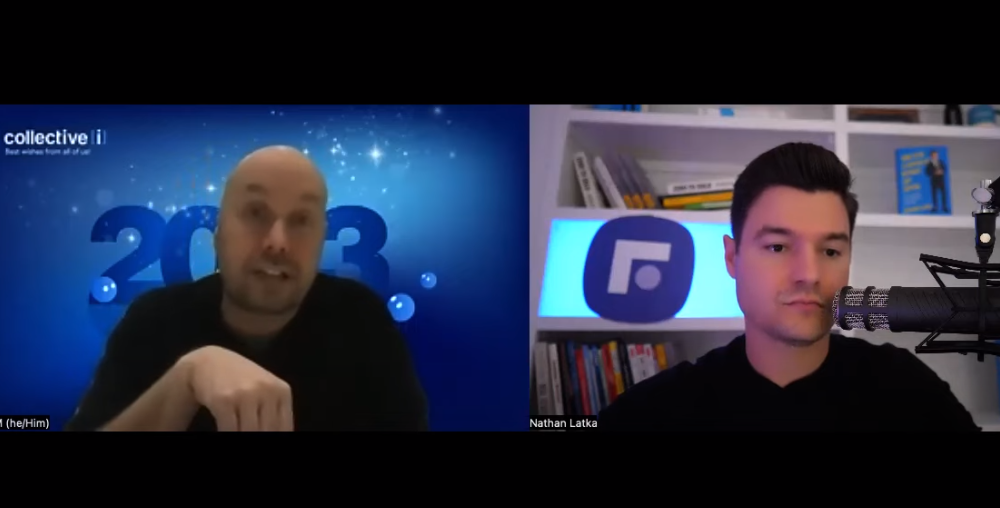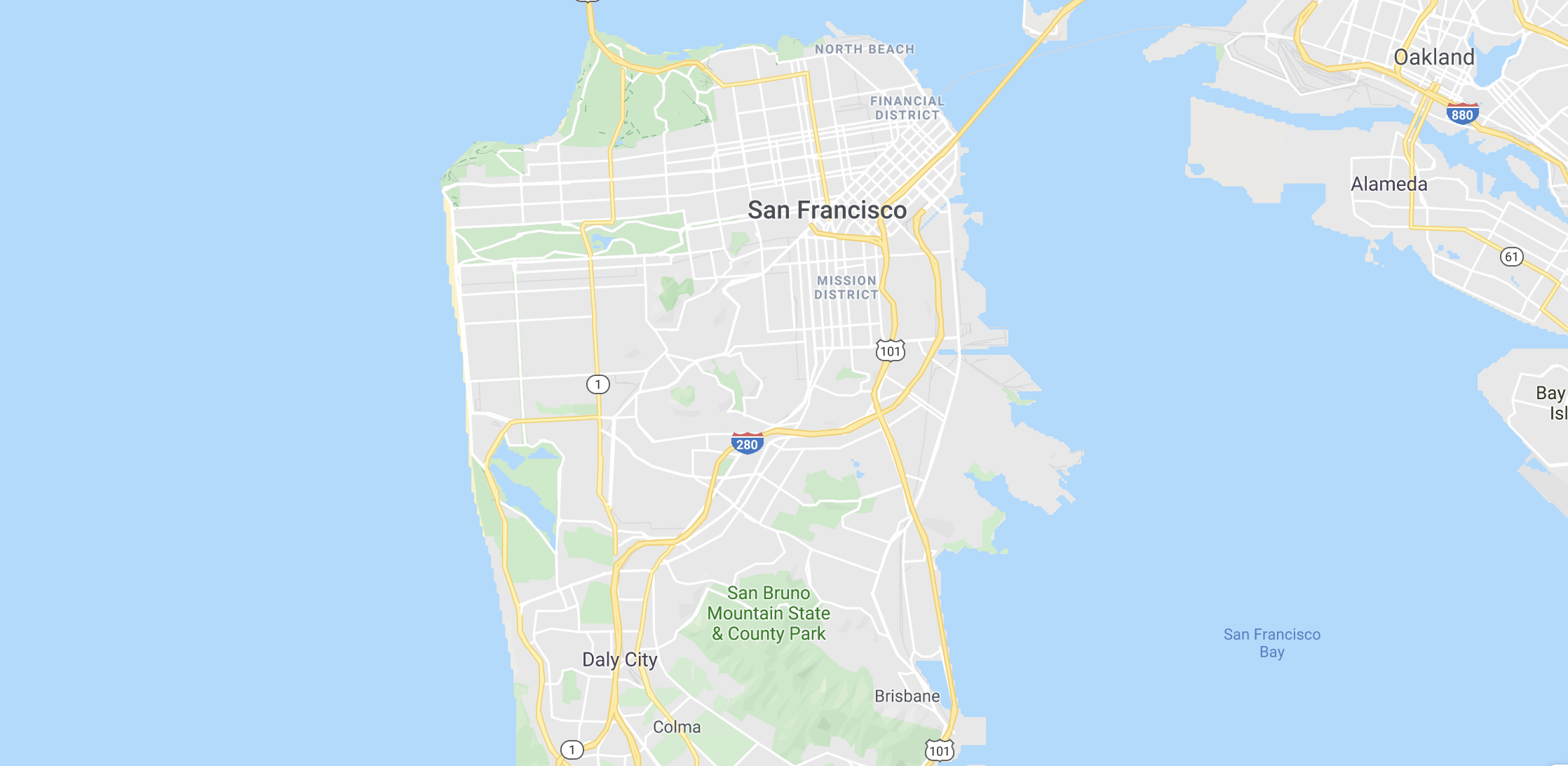What is churn analysis?
One of the things that Nathan Latka asks most often about in his interviews is churn: a metric for how many people stop using a product in a given amount of time.
That number is good to have, but to someone new to business, it might seem a little overstressed. Why do people pay so much attention to it?
In fact, reducing churn should be one of the top priorities for a SaaS company.
For that, a robust churn analysis is necessary to understand customer behavior and what exactly the weak points in your software are. Shore up those weak points, and even a small reduction in churn could mean a serious profit increase for your product and continuous customer retention.
Analyzing Customer Churn Comes in Many Forms
Since we’re talking about a fundamentally simple metric here (the number of customers who stop using your product compared with the total number of users), there are a couple of different ways to go about analyzing it.
The first thought on many people’s minds is probably Excel. As long as you’ve got someone on your team who’s comfortable in the Excel ecosystem, you can make your analysis as broad or as granular as you want.
Naturally, there are off-the-shelf solutions available instead. Why reinvent the wheel?
The benefit of premade software like Alteryx or Churnly is that they include a whole lot of analytics and predictive algorithms to guess at the number of existing customers likely to churn at any one point.
Of course, they don’t come cheap – they’re running a business just like you are, and you may not end up using their specialized features.
Finally, you can bring in the big guns and hire a firm like SaaSOptics or OpexEngine to do the work of budgeting, cost managing, and target analysis, which of course includes churn analysis as part of the deal.
As long as you’ve got the money to invest in it, a little help from expert consulting might be the right move to help a struggling company with a good product that just isn’t seeing the adoption it should.
Churn Prediction: Canceled Subscriptions and Why They Happen
Your churn analysis ought to come up with some of the reasons why your existing customers are shifting away from your software. This can be trickier than it sounds, because it’s too easy to just look at the very last datapoints you have such as a support call. You need to figure out what made them call support to cancel in the first place.
One major reason is switching to a competitor who offers a product at a different price point or with a different feature set. If you go and search for any SaaS-type product, you’ll see half a dozen competitors pop up on the first page, and twice as many if you do the same search in a year’s time.
You’ve got to keep the market in mind and make sure you have a price point and feature set that perfectly fits the customers you’re trying to capture.
Top 3 Reasons to Do Customer Churn Analysis Every Month
1. Finding high churn customers helps you pay more attention to holes in your business.
For example, are you tending to lose a specific type of customer after exactly two months? Maybe your product is only good for their “crunch time period” and unnecessary for them afterward. It might be a good idea to consider what you can offer them the rest of the year!
2. Paying frequent attention to customer success is a good investment in the long run.
Trends change and people’s tastes evolve. You wouldn’t drive your car 100,000 miles without looking at the tires, would you? Regular maintenance on your business helps you notice little problems more often.
3. Developing a stronger future plan.
You’ve likely got your own ideas for how your company is going to evolve, but the market may have others.
With solid customer data every single month on who’s sticking with your product and who’s running away, you’ll be able to maximize your customer lifetime value and predict much more accurately what the state of your business will look like in a month, six months, or a year’s time.
Churn: A Menace in Disguise
Growth is the name of the game in SaaS companies – people talk about tripling every year for the first three years like it’s nothing.
But churn rate puts the brakes on that hard.
Think about it like this: if you lose $10k in revenue one month, you have to fill that hole with $10k in growth – and then you’ve only just broken even!
Churn also strongly limits how much you can pay for new customers. After all, spending a bunch of money to acquire customers that are going to leave before you get a return is wasteful loud and clear.
Your competitors, who might have just one or two percent lower churn, are able to pay more to attract more customers (getting the top spot on Google Ads, for instance), growing much faster than you can. All thanks to the flexibility of having higher acquisition costs.
Key Churn Metrics
There is no single number that’s going to tell you everything you need to know about customer attrition. Instead, you need to measure both customer churn (also called logo churn) and revenue churn.
There’s also no perfect way to measure subscription churn, because sometimes users cancel automatic billing but still use the software for the rest of the month – giving you an opportunity to win them back or even upsell them.
You’ve got to pay attention to the churn in the first thirty days of usage (as many customers don’t renew after the first month), but also over the course of the first year, and again from month 12 to month 13. (See why this might be hard to all manage in Excel?)
Talking of metrics, here is a full list with the most up-to-date numbers from 300 SaaS companies.
Examples of Churn Analysis from Private B2B SaaS Companies
Companies With Net Revenue Retention of 200%+
| Living Security has a gross revenue churn of 1%, an expansion revenue of 312%, for net revenue retention annually of 411%. The company is paying $12000 to acquire customers that start off paying $24000 per year. This means their payback period is 10 months. Source Here: getlatka.com/companies/living-security |
| Reveleer has a gross revenue churn of 10%, an expansion revenue of 150%, for net revenue retention annually of 240%. The company is paying $75000 to acquire customers that start off paying $274800 per year. This means their payback period is 10 months. Source Here: getlatka.com/companies/reveleer |
| Tuuk has a gross revenue churn of 0%, an expansion revenue of 100%, for net revenue retention annually of 200%. The company is paying $700 to acquire customers that start off paying $180000 per year. This means their payback period is 10 months. Source Here: getlatka.com/companies/tuuk |
Companies With Net Revenue Retention of 130-200%
| Screencloud has a gross revenue churn of 36%, an expansion revenue of 104%, for net revenue retention annually of 168%. The company is paying $300 to acquire customers that start off paying $696 per year. This means their payback period is 10 months. Source Here: getlatka.com/companies/screencloud |
| Getoccasion has a gross revenue churn of 10%, an expansion revenue of 75%, for net revenue retention annually of 165%. The company is paying $350 to acquire customers that start off paying $720 per year. This means their payback period is 10 months. Source Here: getlatka.com/companies/getoccasion |
| Cloudcheckr has a gross revenue churn of 4%, an expansion revenue of 49%, for net revenue retention annually of 145%. The company is paying $18000 to acquire customers that start off paying $24000 per year. This means their payback period is 10 months. Source Here: getlatka.com/companies/cloudcheckr |
| Omnisend has a gross revenue churn of 84%, an expansion revenue of 120%, for net revenue retention annually of 136%. The company is paying $450 to acquire customers that start off paying $720 per year. This means their payback period is 10 months. Source Here: getlatka.com/companies/omnisend |
| ZigZag has a gross revenue churn of 0%, an expansion revenue of 30%, for net revenue retention annually of 130%. The company is paying $5000 to acquire customers that start off paying $49200 per year. This means their payback period is 10 months. Source Here: getlatka.com/companies/zigzag |
Companies With Net Revenue Retention of 110-125%
| Hiverhq has a gross revenue churn of 24%, an expansion revenue of 48%, for net revenue retention annually of 124%. The company is paying $415 to acquire customers that start off paying $1380 per year. This means their payback period is 10 months. Source Here: getlatka.com/companies/hiverhq |
| Servicechannel has a gross revenue churn of 4%, an expansion revenue of 24%, for net revenue retention annually of 120%. The company is paying $ to acquire customers that start off paying $120000 per year. This means their payback period is 10 months. Source Here: getlatka.com/companies/servicechannel |
| Neoreach has a gross revenue churn of 20%, an expansion revenue of 40%, for net revenue retention annually of 120%. The company is paying $110000 to acquire customers that start off paying $120000 per year. This means their payback period is 10 months. Source Here: getlatka.com/companies/neoreach |
| Rifiniti has a gross revenue churn of 3%, an expansion revenue of 20%, for net revenue retention annually of 117%. The company is paying $20000 to acquire customers that start off paying $150000 per year. This means their payback period is 10 months. Source Here: getlatka.com/companies/rifiniti |
| Branch has a gross revenue churn of 5%, an expansion revenue of 20%, for net revenue retention annually of 115%. The company is paying $ to acquire customers that start off paying $79200 per year. This means their payback period is 10 months. Source Here: getlatka.com/companies/branch |
Companies With Net Revenue Retention of 100-110%
| Mailupgroup has a gross revenue churn of 12%, an expansion revenue of 20%, for net revenue retention annually of 108%. The company is paying $ to acquire customers that start off paying $2700 per year. This means their payback period is 10 months. Source Here: getlatka.com/companies/mailupgroup |
| JustCall has a gross revenue churn of 36%, an expansion revenue of 42%, for net revenue retention annually of 106%. The company is paying $200 to acquire customers that start off paying $1800 per year. This means their payback period is 10 months. Source Here: getlatka.com/companies/justcall |
| Iyka has a gross revenue churn of 0%, an expansion revenue of 5%, for net revenue retention annually of 105%. The company is paying $ to acquire customers that start off paying $48000 per year. This means their payback period is 10 months. Source Here: getlatka.com/companies/iyka |
| Socialtables has a gross revenue churn of 5%, an expansion revenue of 10%, for net revenue retention annually of 105%. The company is paying $7000 to acquire customers that start off paying $4000 per year. This means their payback period is 10 months. Source Here: getlatka.com/companies/socialtables |
| Passkit has a gross revenue churn of 9%, an expansion revenue of 13%, for net revenue retention annually of 104%. The company is paying $1500 to acquire customers that start off paying $2160 per year. This means their payback period is 10 months. Source Here: getlatka.com/companies/passkit |
| Bynder has a gross revenue churn of 7%, an expansion revenue of 11%, for net revenue retention annually of 104%. The company is paying $30000 to acquire customers that start off paying $30000 per year. This means their payback period is 10 months. Source Here: getlatka.com/companies/bynder |
Companies With Net Revenue Retention of 90-100%
| IamIP has a gross revenue churn of 1%, an expansion revenue of 0%, for net revenue retention annually of 99%. The company is paying $3000 to acquire customers that start off paying $9600 per year. This means their payback period is 10 months. Source Here: getlatka.com/companies/iamip |
| Verticaliq has a gross revenue churn of 1%, an expansion revenue of 0%, for net revenue retention annually of 99%. The company is paying $10000 to acquire customers that start off paying $15000 per year. This means their payback period is 10 months. Source Here: getlatka.com/companies/verticaliq |
| Storeautomator has a gross revenue churn of 2%, an expansion revenue of 0%, for net revenue retention annually of 98%. The company is paying $100 to acquire customers that start off paying $1200 per year. This means their payback period is 10 months. Source Here: getlatka.com/companies/storeautomator |
| Propeller Crm has a gross revenue churn of 2%, an expansion revenue of 0%, for net revenue retention annually of 98%. The company is paying $ to acquire customers that start off paying $600 per year. This means their payback period is 10 months. Source Here: getlatka.com/companies/propeller-crm |
| Adzerk has a gross revenue churn of 2%, an expansion revenue of 0%, for net revenue retention annually of 98%. The company is paying $20000 to acquire customers that start off paying $60000 per year. This means their payback period is 10 months. Source Here: getlatka.com/companies/adzerk |
| Rydoo has a gross revenue churn of 3%, an expansion revenue of 0%, for net revenue retention annually of 97%. The company is paying $ to acquire customers that start off paying $0 per year. This means their payback period is 10 months. Source Here: getlatka.com/companies/rydoo |
| Docebo has a gross revenue churn of 3%, an expansion revenue of 0%, for net revenue retention annually of 97%. The company is paying $30000 to acquire customers that start off paying $20000 per year. This means their payback period is 10 months. Source Here: getlatka.com/companies/docebo |
Companies With Net Revenue Retention of 75-90%
| Corporate360 has a gross revenue churn of 12%, an expansion revenue of 0%, for net revenue retention annually of 88%. The company is paying $ to acquire customers that start off paying $17000 per year. This means their payback period is 10 months. Source Here: getlatka.com/companies/corporate360 |
| Proleads has a gross revenue churn of 12%, an expansion revenue of 0%, for net revenue retention annually of 88%. The company is paying $ to acquire customers that start off paying $1800 per year. This means their payback period is 10 months. Source Here: getlatka.com/companies/proleads |
| Businesshangouts has a gross revenue churn of 12%, an expansion revenue of 0%, for net revenue retention annually of 88%. The company is paying $30 to acquire customers that start off paying $840 per year. This means their payback period is 10 months. Source Here: getlatka.com/companies/businesshangouts |
| Datanyze has a gross revenue churn of 12%, an expansion revenue of 0%, for net revenue retention annually of 88%. The company is paying $9000 to acquire customers that start off paying $12000 per year. This means their payback period is 10 months. Source Here: getlatka.com/companies/datanyze |
| Artesian has a gross revenue churn of 12%, an expansion revenue of 0%, for net revenue retention annually of 88%. The company is paying $60000 to acquire customers that start off paying $70000 per year. This means their payback period is 10 months. Source Here: getlatka.com/companies/artesian |
| Kvsocial has a gross revenue churn of 12%, an expansion revenue of 0%, for net revenue retention annually of 88%. The company is paying $140 to acquire customers that start off paying $840 per year. This means their payback period is 10 months. Source Here: getlatka.com/companies/kvsocial |
| Elastic has a gross revenue churn of 12%, an expansion revenue of 0%, for net revenue retention annually of 88%. The company is paying $10000 to acquire customers that start off paying $12000 per year. This means their payback period is 10 months. Source Here: getlatka.com/companies/elastic |
| Marketmuse has a gross revenue churn of 12%, an expansion revenue of 0%, for net revenue retention annually of 88%. The company is paying $9000 to acquire customers that start off paying $42000 per year. This means their payback period is 10 months. Source Here: getlatka.com/companies/marketmuse |
Companies With Net Revenue Retention of 50-75%
| Syndy has a gross revenue churn of 30%, an expansion revenue of 0%, for net revenue retention annually of 70%. The company is paying $5000 to acquire customers that start off paying $20000 per year. This means their payback period is 10 months. Source Here: getlatka.com/companies/syndy |
| Maximus has a gross revenue churn of 30%, an expansion revenue of 0%, for net revenue retention annually of 70%. The company is paying $ to acquire customers that start off paying $36000 per year. This means their payback period is 10 months. Source Here: getlatka.com/companies/maximus |
| Kudigo has a gross revenue churn of 32%, an expansion revenue of 0%, for net revenue retention annually of 68%. The company is paying $2.1 to acquire customers that start off paying $168 per year. This means their payback period is 10 months. Source Here: getlatka.com/companies/kudigo |
| Speak2Leads has a gross revenue churn of 36%, an expansion revenue of 0%, for net revenue retention annually of 64%. The company is paying $400 to acquire customers that start off paying $13800 per year. This means their payback period is 10 months. Source Here: getlatka.com/companies/speak2leads |
| Crazy Lister has a gross revenue churn of 36%, an expansion revenue of 0%, for net revenue retention annually of 64%. The company is paying $80 to acquire customers that start off paying $274 per year. This means their payback period is 10 months. Source Here: getlatka.com/companies/crazy-lister |
| Teamwork has a gross revenue churn of 36%, an expansion revenue of 0%, for net revenue retention annually of 64%. The company is paying $360 to acquire customers that start off paying $900 per year. This means their payback period is 10 months. Source Here: getlatka.com/companies/teamwork |
Companies With Net Revenue Retention of Less Than 50%
| Proposify has a gross revenue churn of 54%, an expansion revenue of 0%, for net revenue retention annually of 46%. The company is paying $50 to acquire customers that start off paying $563 per year. This means their payback period is 10 months. Source Here: getlatka.com/companies/proposify |
| Directiq has a gross revenue churn of 60%, an expansion revenue of 0%, for net revenue retention annually of 40%. The company is paying $150 to acquire customers that start off paying $1800 per year. This means their payback period is 10 months. Source Here: getlatka.com/companies/directiq |
| Justuno has a gross revenue churn of 60%, an expansion revenue of 0%, for net revenue retention annually of 40%. The company is paying $163 to acquire customers that start off paying $800 per year. This means their payback period is 10 months. Source Here: getlatka.com/companies/justuno |
| Famoco has a gross revenue churn of 60%, an expansion revenue of 0%, for net revenue retention annually of 40%. The company is paying $ to acquire customers that start off paying $12 per year. This means their payback period is 10 months. Source Here: getlatka.com/companies/famoco |
| Pandadoc has a gross revenue churn of 60%, an expansion revenue of 0%, for net revenue retention annually of 40%. The company is paying $1200 to acquire customers that start off paying $1200 per year. This means their payback period is 10 months. Source Here: getlatka.com/companies/pandadoc |
In a Nutshell
The most important takeaway is this: ignore customer and revenue churn, and you’re looking at your business through a dusty mirror.
Take steps today to put more measures in place for getting data on the customer experience, such as surveys, chat widgets, or follow-up emails. Those data points, in aggregate, are going to have a huge effect on your revenue over time.
Nip that churn in the bud, and your bottom line will thank you.











